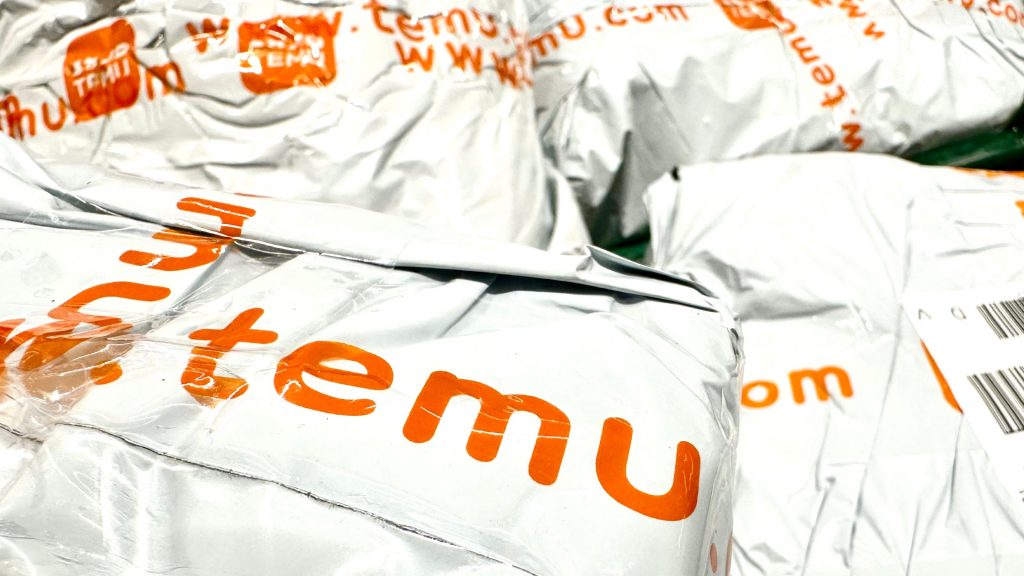If nothing else, Temu shows that advertising definitely works – provided you spend enough money. The cut-price ecom marketplace is cutting a swathe into key Western markets and starting to displace incumbents. It is less than two years old.
With its “shop like a billionaire” tagline, Temu is following its own advice, dropping at least $1.5B on ads last year, with some estimates suggesting the true figure is much higher. (In total, Temu’s parent company PDD spent $11.58B on sales and marketing in 2023, up 51%, which it said was largely made up of advertising and promotion.)
Analysts suggest more than $500M of Temu’s ad spend came in the last three months of the year as the emerging e-com juggernaut aimed to carve itself a fatter slice of the November online discounting battle and the Christmas spending spree.
It’s flooding search, saturating social media (Meta got a $1.2B bump last year); paying an army of influencers and spending big on TV – six Super Bowl ads don’t come cheap.
These are classic brand and demand tactics but on a scale that is leaving analysts flabbergasted and powering a land grab, growth-at-all-costs strategy that appears unprecedented.
Plus its gamified user incentives sweat paid acquisition costs as users unlock rewards for referrals – scooping up more granular user data as well as accelerating sales with social network effects.
It’s paying off. Temu was the most downloaded app of 2023, with circa 388M people installing it – with US gains and traction in key European and APAC markets.
Signs are it will continue the free-spending playbook in 2024. JPMorgan estimates at the current run rate, Temu’s ad spend will hit $3B.
But Temu’s advertising blitz has dual impacts. As well as fueling its own meteoric rise, hovering up all those ads and outbidding competitors for them is driving up acquisition costs – for rivals like Etsy, whose CEO complained Temu and Shein are “almost singlehandedly” increasing ad costs – and across the board.
Loss leader?

Even with a business model that ships short-run, demand-led products directly from Chinese factories to consumers, how anybody makes money at the prices Temu offers is difficult to fathom, though low labour costs, over capacity in many factories due to softening of China’s economy and government export incentives probably help. Plus, the way it bundles up packages but then navigates import taxes by labelling them individually for standard postal service delivery – circumventing customs rules that apply to larger deliveries – helps minimize shipping costs and inspections, though jurisdictions around the world are starting to think about tightening such loopholes.
Ads next?

PDD doesn’t go into detail in its financials, gives away very little in its earnings calls – and doesn’t break out Temu at all. But most analysts believe Temu must be losing significant sums of money, given its percentage take – or commission – is likely low single digits and potentially lower: Sister company Pinduoduo, for example, charges merchants 0.6% on each sale, margins that would render most businesses unviable.
Goldman Sachs estimated Temu lost $7 per order in 2023, though the company disputes that. Even so, that figure suggests the company is getting closer to breakeven – Wired reported earlier in 2023 that per item losses were sitting at $30 as Temu threw money at breaking into the US market.
Yet parent company PDD is making money, posting $8.23B operating profit for 2023 from revenue of $34.88B.
While PDD spent $11.58B on sales and marketing – mainly ads and promotion – it made $21.6B in revenue from ‘online marketing services and others’. If Temu, now getting to significant scale, is to follow the same playbook as other marketplaces like Amazon, ad revenues could play a major role – if it starts taking ad dollars from brands and agencies to tap its users across international markets.
Temu is expected to start opening up its marketplace to sellers in US and Europe within weeks. Brands appear set to pile in – which opens the door to Temu launching an ads business, enabling those sellers to promote their wares in much the same way as they do on Amazon and the growing number of retail media networks now making up the fastest growing segment of the ad market.
If Temu does take that approach – and some suggest monetising the platform with ads is the next logical step – Amazon could start to face genuine competition not just within its marketplace, but its now circa $50B ads business.
But advertising’s other big two, Google and Meta, and maybe TV networks, could benefit – because Temu could then recycle ad revenues to deploy even greater advertising firepower.
Which could make life more interesting for those already feeling the price impacts of Temu’s free-spending ads blitz – with knock on pay-per-click inflation for everyone else.


